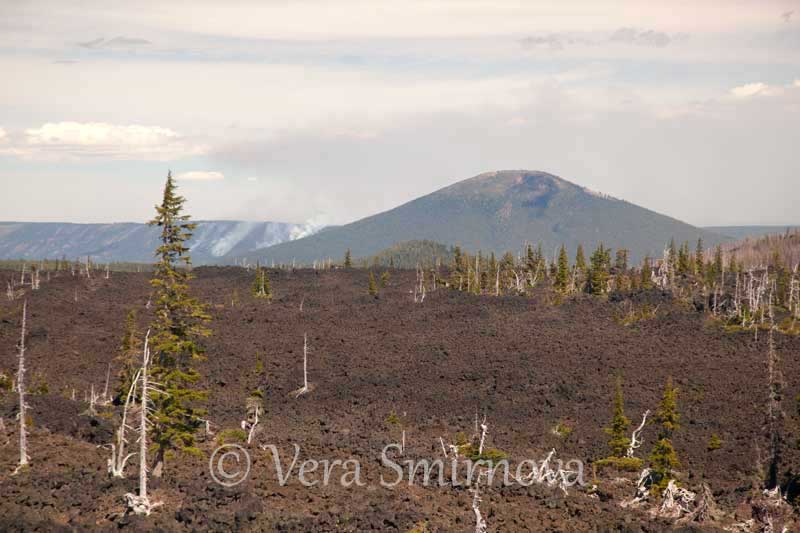Oregon trip, day 6: Proxy Falls and Dee Wright Observatory
Belknap Hot Springs where we stayed is located close to the intersection of roads 126 and 242, and the scenic road 242 is definitely worth driving on, even with its curves. It follows the path of an 1860 wagon route. The green, mossy enchanted forest on both sides of the road is beautiful, and can be explored through numerous hikes - there are many trail head parking lots and campgrounds along the road. We parked in one of those spots and went on an easy hike to Proxy Falls. The trail leads through a lava field and to the shady green forest, then later forks into two paths - one leading to the lower point of view and the other to the upper falls. Do not miss the lower view, it shows the entirety of the waterfall. There is a very good viewpoint on the side of the trail.



For those more adventurous: the narrow, very steep path to the left goes all the way down to the river. In late August, when we visited, there were beautiful butterflies all around.

As we drove further towards the Sisters along road 242, we started to see some old lava flows on both sides. Then the road climbed up, and suddenly we found ourselves in the middle of an enormous lava field:

I've never seen anything like it. And honestly, I did not know that such a big part of Oregon is made up of lava. This particular field covers about 65 square miles and is a result of two major eruptions that occurred separately three and two thousand years ago.
We stopped on McKenzie Pass to visit Dee Wright Observatory and took a half-mile paved educational trail. Signs all along the length of the path offer a lot of interesting information on how the lava tubes were formed, why the field has those hills and valleys and other curious geological facts.
When I first heard of the Dee Wright Observatory, I assumed that it has something to do with the observation of a starry sky. As it turns out, I was totally wrong on that. In reality, the fortress-like observatory, built with blocks of cooled-down lava, was designed as an overlook of the surrounding mountains. As we entered the round "crown", we saw that not only did it have large windows for enjoying the landscape, but also seven small openings accompanied with labels with peak names written on them. So, for example, when you look into the window labeled "Big Sister" you identify exactly where that peak is and so on. Very interesting!


But what is the practical use of it besides viewing the lava field and mountain peaks?
Actually, it has never been used and is not intended for scientific purposes. Well, in 1964 NASA had conducted a training for astronauts in those lava fields before their mission to the Moon, but it had nothing to do with the structure.
The structure itself was erected in 1935, as one of the many ways to give people a job during the time of the Great Depression, and Dee Wright was not a scientist but a crew foreman who led the works and passed away one year before the observatory was completed.
I’m glad we had listened to our friends and visited the Dee Wright observatory: it was very educational, we learned a lot about volcanoes, and also observing this huge lava field reminds you how powerful Nature is. We imagined tall peaks and green forests once sprawling there, and how one day the eruption shook the ground, how rivers of molten rock flowed down, joining into one huge sea of melted stone. We tried to imagine how hot it was and how many days or weeks it took the lava to cool down — we wondered if there were some people in the area and whether they had managed to escape.

Standing in the middle of the moonscape-like lava field, which was once the lively green forest, and it will one day be again, we began to understand how small and vulnerable we humans are, and it made us appreciate life even more. Life, with all its ups and downs, births and deaths, and everlasting love.




